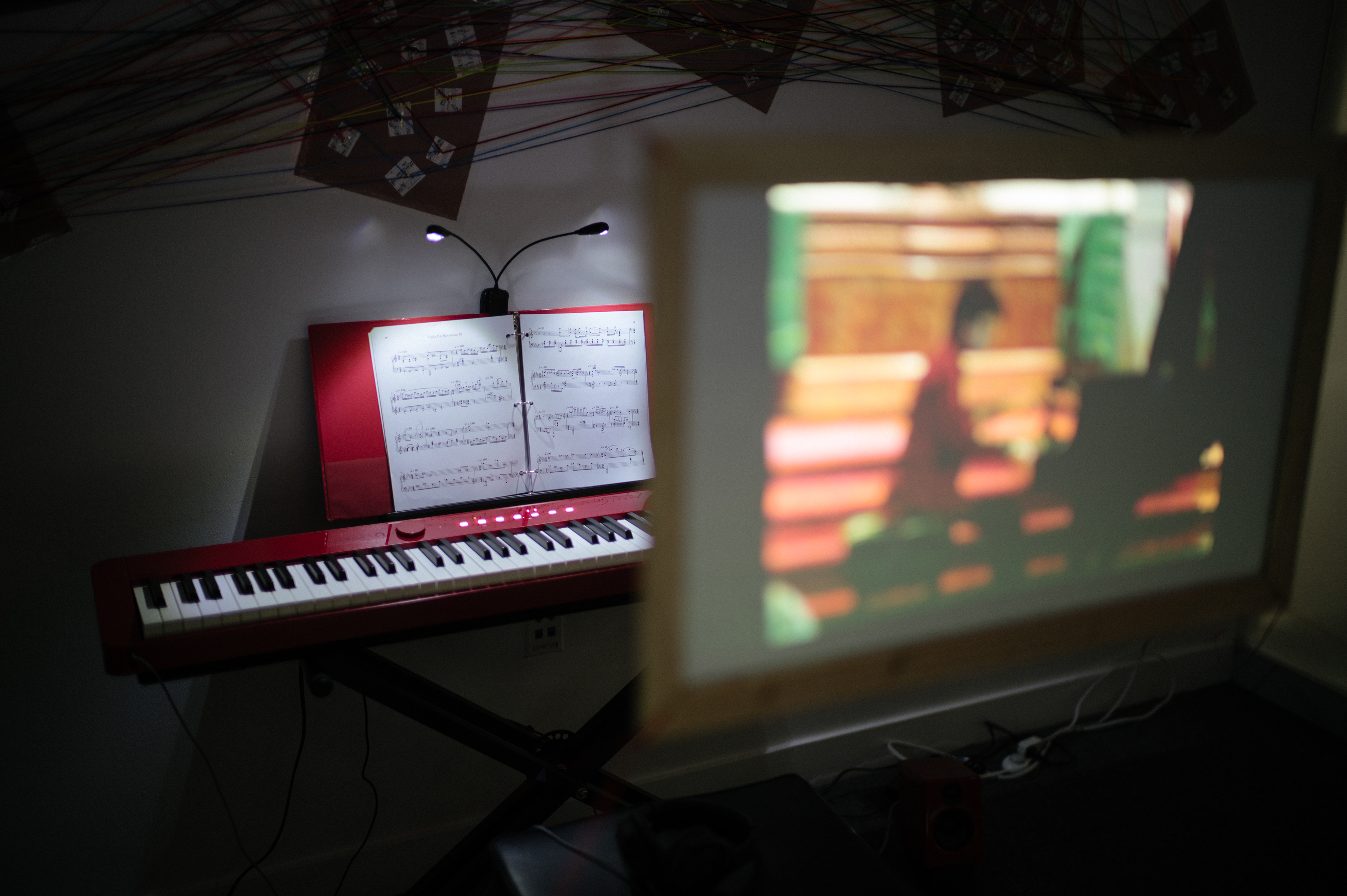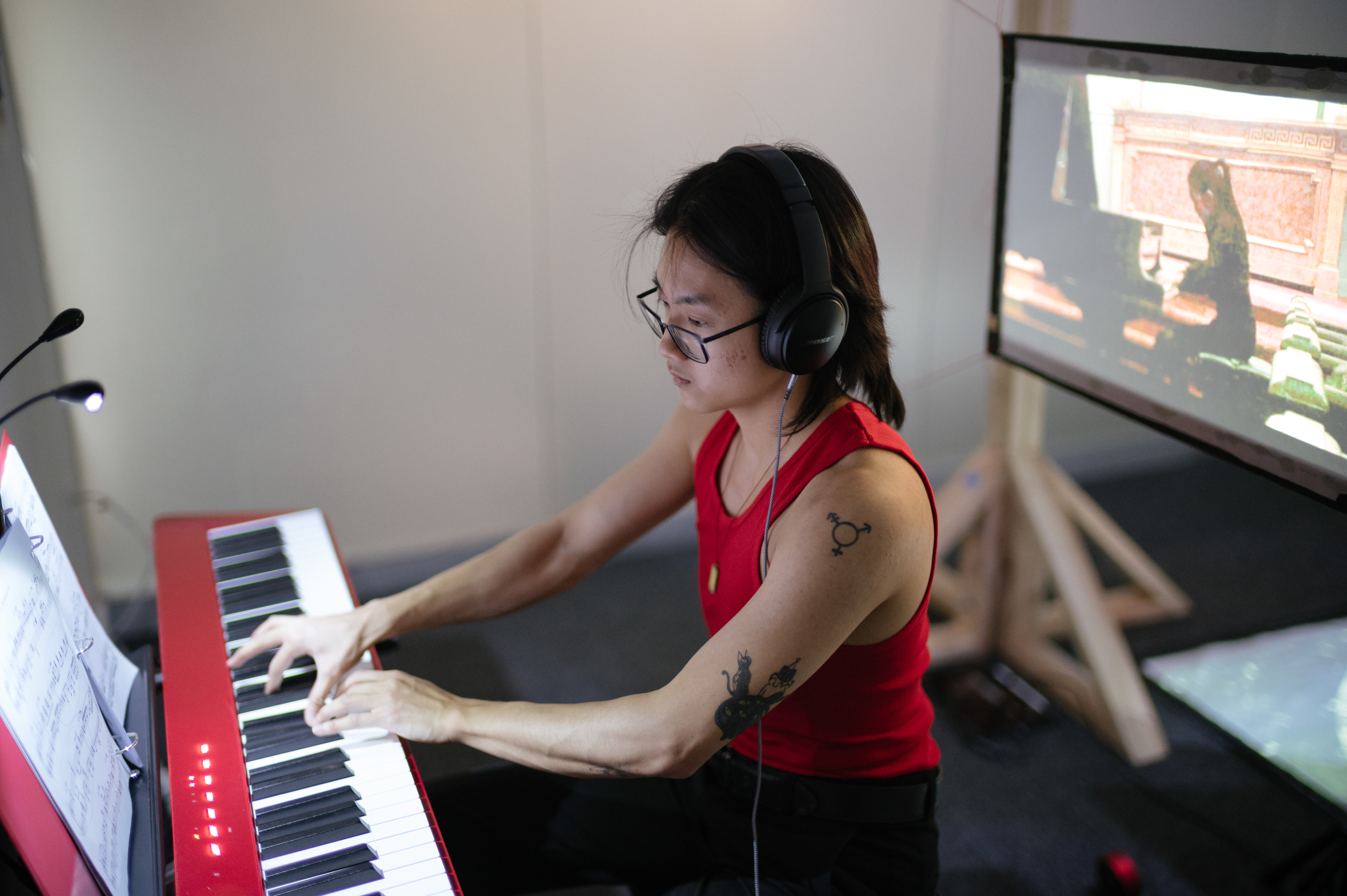RANDOM WALK, Cycle I (Movements I-IV): Rehearsal Recording
Excerpt of RANDOM WALK in performance, from Sonata for the Body in Three-Part Time
RANDOM WALK
2024
composition, installation
from Sonata for the Body in Three-Part Time (Past)
A duet for two pianos across time, composed by physically performing the mathematical process of a "random walk" on 19 classical piano pieces I played as a child, as an exploration of my experience of performing gender, race, and music throughout a decade of traditional conservatory training. One half is played live in present day, and the other half is stitched together from past videos of my childhood performances.
Published paper in the Proceedings of Bridges Math Art 2025 found here.
_____
What is the past? A series of memories, thought of in the present.
Memories as they happened, remembered in a certain order.
What is the past? Memories chopped up, reordered, formed into a new understanding.
The past is a story of memories you tell yourself to make sense of your present moment.
This story I’m telling myself is a story of performance.
Performance of gender, performance of race, performance of music.
Performance through the body.
Performance through the hands.





Existing pieces used as source material for RANDOM WALK composition